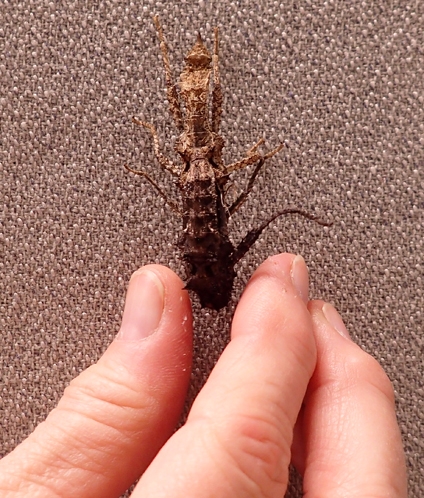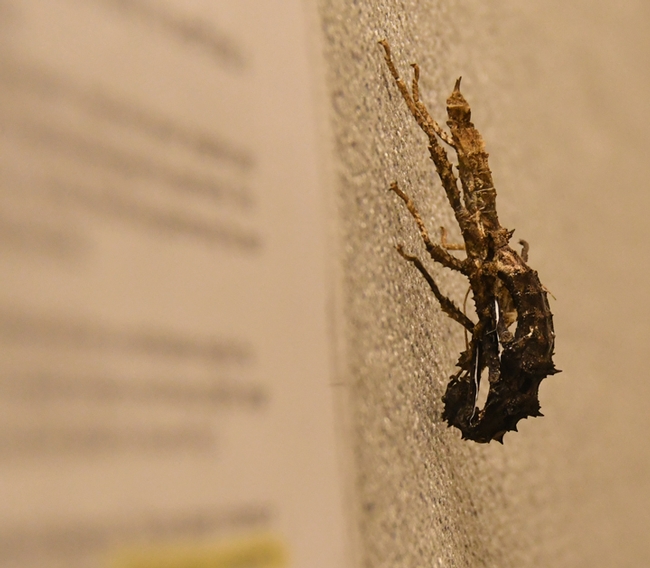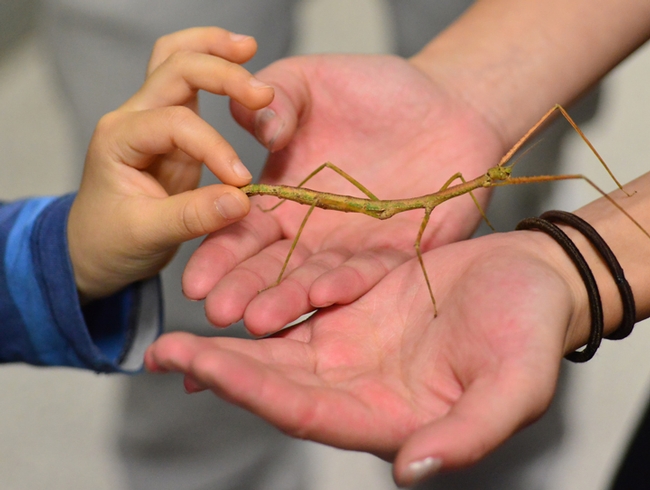
It walked.
When Lynn Kimsey, director of the Bohart Museum of Entomology and UC Davis professor of entomology, glanced at a wall near the entrance of the Bohart Museum during a recent open house, she noticed something that wasn't part of the wall.
A stick insect, aka walking stick.
An escapee from the Bohart's live "petting zoo."
And it was doing what stick insects (Phasmatodea) do--it was molting.
“It should be finished by now,” Kimsey said, periodically keeping an eye on its progress.
"Twiggy" is now back in the petting zoo, awaiting the arrival of visitors to the Bohart Museum during the seventh annual UC Davis Biodiversity Museum Day from 9 a.m. to 4 p.m. on Saturday, Feb. 17, when the public can explore the diversity of life at 13 museums and/or collections. For free. Times will vary from 9 a.m. to 1 p.m. or from noon to 4 p.m. The Bohart, located in Room 1124 of the Academic Surge Building on Crocker Lane and the home of nearly eight million insect specimens, will be open from 9 a.m. to 1 p.m. (See more information on Biodiversity Day.)
Like all insects, stick insects have a head, thorax and abdomen and six legs. Their elongated bodies mimic a stick or straw. These "bug sticks" don't move fast (is that why they're calling "walking sticks" instead of "running sticks?"), but what a perfect camouflage from predators!
Entomologists tell us that before reaching the adult stage, a stick insect may shed its skin six to nine times, depending on the species and the gender. Its outer skeleton (skin) prevents it from growing so it sheds its skin to do so.
Stick insects are a favorite at the Bohart Museum petting zoo, which also includes Madagascar hissing cockroaches, praying mantises, and tarantulas. Visitors love to hold the sticks and photograph them. They can also purchase stick insect T-shirts in the Bohart Museum's year-around gift shop.
Ever see a stick insect molting? Here's a You Tube channel that depicts the process perfectly. You can also learn about them in this Fascinating Facts About Stick Insects.
A few facts from Wikipedia:
- The genus Phobaeticus includes the world's longest insects and can reach 12 inches long.
- Many species have a secondary line of defense in the form of startle displays, spines or toxic secretions
- Phasmatodea can be found all over the world except for the Antarctic and Patagonia.
- They are most numerous in the tropics and subtropics; the greatest diversity is found in Southeast Asia and South America, followed by Australia, Central America, and the southern United States.
- The island of Borneo has more species of Phasmatodea than any other place in the world: The count: 300 species.
- Many species of phasmids are parthenogenic, meaning the females lay eggs without needing to mate with males to produce offspring.
Attached Images:


